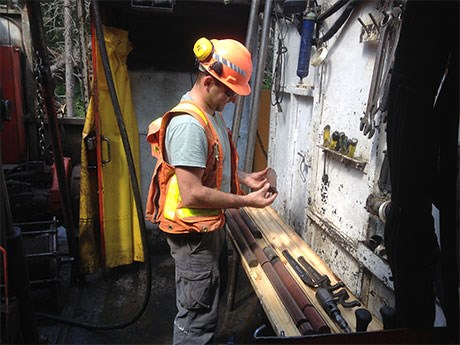Transition Metals and Panoramic Resources have high hopes for Thunder Bay area discoveries
Northwestern Ontario is becoming a hotbed of PGM finds. However, currently depressed metal prices for platinum and palladium means nobody is racing to dig them up just yet.“Northwestern Ontario has a higher-than-average amount of potential PGM targets,” said Al MacTavish, exploration manager at Panoramic Resources Ltd. “The best time to explore is when nobody else is, and when the various commodity prices are low. If you can get the money to explore, you do it.”
But getting the money – that’s the rub, of course. Panoramic is in the first year of a five-year earn-in agreement with Rio Tinto to explore its Thunder Bay North PGM deposit, 50 kilometres northeast of Thunder Bay.
The multifaceted agreement hinges on an earn-in arrangement in which Rio Tinto would secure up to 70 per cent of Thunder Bay North by spending $20 million on the project. The partnership came about in part because Panoramic surrounds a Rio Tinto claim. This agreement could integrate the two projects.
“They’re not presently developing the deposit,” said MacTavish. “Rio has different parameters on what they consider a mineable deposit, so they are trying to find more (ore).”
Transition Metals Corp. is another player in the PGM exploration space. The company has several finds across Northern Ontario in various stages of exploration including its Sunday Lake deposit about 25 kilometres north of Thunder Bay, for which it won the 2014 Bernie Schneider’s Discovery of the Year Award from the Northwestern Ontario Prospectors Association.
“The PGM market has been difficult to read,” said Transition Metals president and CEO, Scott McLean. “We are bullish on the mid-term and long-term pricing of platinum and palladium. Certainly supply avenues are starting to be constrained.”
Transition Metals is a multi-metal exploration company that uses a project generator approach, selling interest to other companies to fund exploration. For Sunday Lake, it has partnered with Impala Platinum Ltd. (Implats), which owns 75 per cent of the joint venture project in exchange for funding 100 per cent of the drilling until the completion of a feasibility study.
“We recognize that the project needs a lot more drilling,” McLean said, adding that it will require millions of dollars to complete. “We will endeavour to get that done in 2016 and move towards feasibility as quickly as we can.”
Transition Metals is currently looking for a partner to start drilling another PGM find called Saturday Night, located about 16 kilometres west of Sunday Lake, and has other targets in the area.
These, along with Panoramic’s Thunder Bay North find, represent a new type of PGM deposit.
“In Thunder Bay, we have about seven projects in the area that are focused on a specific intrusion type associated with the (Midcontinent Rift System). Those intrusions have very distinct chemistry, spatial distribution, and geophysical expression,” McLean said. “This category of intrusion has only been recognized within the last 10 to 15 years.”
Although North American Palladium’s Lac Des Iles mine is about 100 kilometres north of the new finds, the PGMs found in the new locations are completely different geologically.
“Lac Des Iles is Archean in age, so there’s a 1.5 billion year difference in age, and a completely different style of mineralization,” said Panoramic’s MacTavish. The new finds were a total surprise, he said. “Thunder Bay North was found in the Quetico sub-province rocks which historically have had very little mineralization of any kind… This changed the paradigm for the area.”
The property has an open pit indicated resource of 8,460,000 tonnes of ore grading 1.04 g/t platinum and .98 g/t palladium and an underground indicated resource of 1,369,000 tonnes grading 1.65 g/t platinum and 1.56 g/t palladium. The property also has another 525,000 tonnes of inferred resources.
As interesting as this is, it’s all academic in terms of a viable deposit until metal prices start to climb. On January 1, 2016, platinum was trading at $882.25 per ounce, down from US$1,679.05 on February 1, 2013. Palladium has taken a corresponding hit, trading at US$532.75 on January 1, 2016 – down from $880.52 on July 1, 2014. Both metals are highly dependent on the auto industry where they are used in catalytic converters to reduce emissions.
Scotiabank’s Global Auto Report, published in December, pointed to a recovery in the auto industry, which could help prices in the future. At the moment though, the mining industry isn’t seeing it.
“Hopefully, at some point when commodity prices improve and if Rio finds more resources, then I would expect that the project would become more economic,” MacTavish said.



.jpg;w=120;h=80;mode=crop)